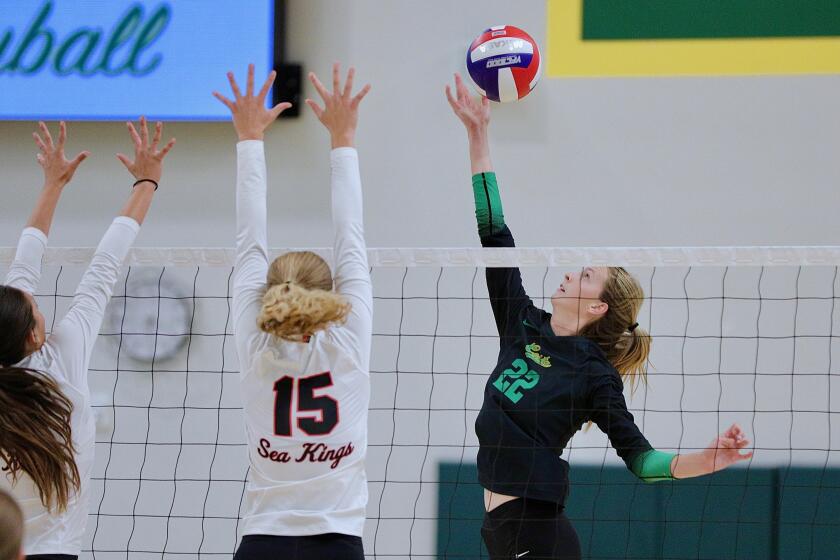NCAA Aspirations Likely Will Strand 2 CSUN Athletes
Sometime about noon today James W. Cleary, president of Cal State Northridge, will announce in a press conference that the school’s athletic program will move to NCAA Division I in all sports but football. And with that swimmer Chris Breedy and volleyball player Sue Darcey will be one official document away from being left out in the cold.
Northridge must petition the NCAA by June 1 in regard to upgrading its athletic status and as soon as it does, Breedy and Darcey, All-Americans in their respective sports, will become ineligible.
During the two-year period Northridge must wait before it is accepted into the major-college ranks, the school must operate under Division I eligibility guidelines. One of those rules stipulates that an athlete must “complete his or her seasons of participation within five calendar years” from the time they first register at a college.
Breedy, a 28-year old junior, once held the American record in the 100-yard backstroke. She attended the University of Florida on a swimming scholarship from 1977-79, then dropped out of school. She enrolled at CSUN last fall, trained for seven weeks and won titles in the 100 and 200-yard backstrokes at the Division II nationals in March.
Darcey, 22, accepted a scholarship to the University of Washington in 1983, started as a freshman, then left the team after a coaching change. After a two-year layoff, she transferred to CSUN and played the past two seasons as an outside hitter.
Both athletes have a year of eligibility remaining according to Division II and Division III regulations. Bob Hiegert, CSUN’s athletic director, said he is willing to grant an athletic release should they have an opportunity to transfer.
It is unlikely, however, that either will opt to do so.
“There is so much red tape with something like that. I can’t imagine going through that again,” said Breedy, who has hopes of making the U. S. national team.
Hiegert said coaches had been aware of the rules for about a year. “It’s unfortunate,” he said, “but whenever something like this is done one or two kids are always going to be caught in it.”
Get our high school sports newsletter
Prep Rally is devoted to the SoCal high school sports experience, bringing you scores, stories and a behind-the-scenes look at what makes prep sports so popular.
You may occasionally receive promotional content from the Los Angeles Times.




